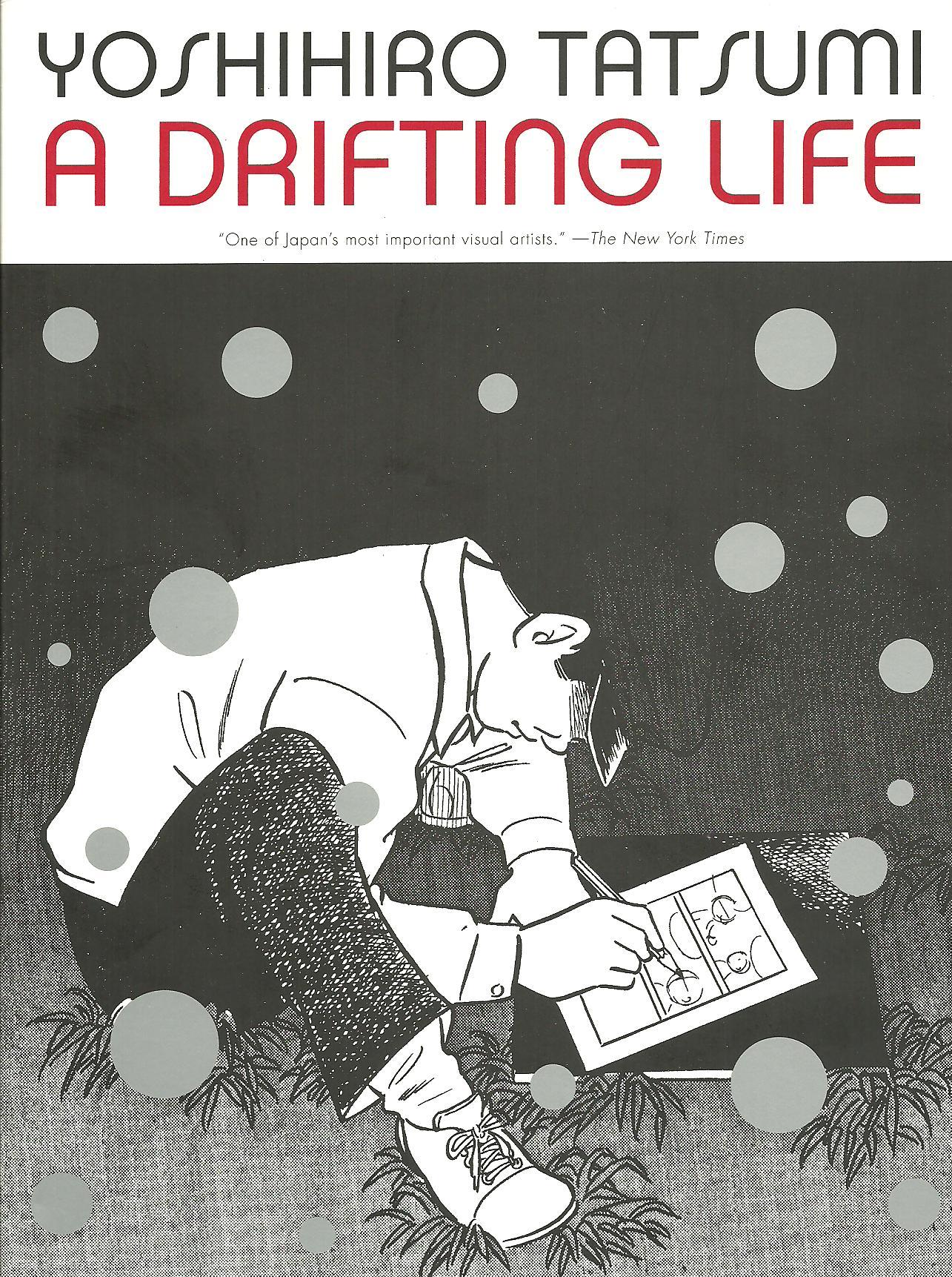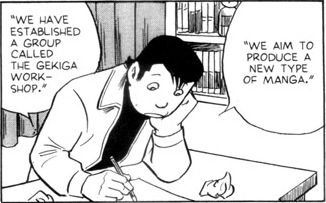A Drifting Life
by Martin Skidmore 16-Jan-11
A huge autobiography covering Yoshihiro Tatsumi’s first decade in manga, in comic form.
 I’ve read more books and fewer biographies, auto- or otherwise, than just about anyone I know. I guess maybe one book in every thousand I’ve read has been in that form. I’ve read many more art monographs, and I always get exasperated with any biographical details not directly, explicitly, unarguably related to the artwork. I have almost no interest in the form.
I’ve read more books and fewer biographies, auto- or otherwise, than just about anyone I know. I guess maybe one book in every thousand I’ve read has been in that form. I’ve read many more art monographs, and I always get exasperated with any biographical details not directly, explicitly, unarguably related to the artwork. I have almost no interest in the form.
On the other hand, I am passionately interested in Japanese arts, and certainly in manga. I’d read some Tatsumi before and liked it a lot, but did I really want to read an 800+ page long partial autobio, even in comic form? I’d not been all that tempted to spend the money, until I saw it remaindered cheap.
He had an interesting enough family life – a dodgy wheeler-dealer of a father, with the clear implication that he had a few mistresses; a seriously ill big brother with whom he shared interests, but at the bad times that brother would behave appallingly. He’s also very good at sketching in the societal background of the time – this account starts when he was 12 or 13 in 1948. Not much historical perspective, in that he doesn’t address the shocking changes, mentally, structurally and so on, in Japan after the blow of their defeat and the atrocities of the atomic bombs, but he gives us a good picture of what things were like at the time. (And to be fair, the ending does highlight his lack of any historical consciousness at that time.)
But the appeal of this is as the autobiography of the early work of a comic artist of considerable importance (very much cf Will Eisner’s The Dreamer). This starts when he and his brother both get a few short strips published in magazines, and progresses through his early career. In 1950, Osamu Tezuka was already becoming the godlike figure he has since been seen as in Japanese comics, when Tatsumi met him. He visits Tezuka at home, and is shown his new work in progress – Jungle Taitei. As someone who reveres Tezuka, I was genuinely moved by this, picturing a young creator meeting someone like that, getting a preview of such a major work.
 We follow Tatsumi into his developing position within manga – earning a decent living for some years producing what seem to have been lightweight strips, humour and detective stories largely for kids. He gets frustrated and more ambitious, wanting to distinguish his works from these, do different things with the form. I kind of wished this covered a few more years, as he did separate himself from the pack by telling different kinds of stories and become an important influence a bit later – perhaps there is another volume or two to come of this?
We follow Tatsumi into his developing position within manga – earning a decent living for some years producing what seem to have been lightweight strips, humour and detective stories largely for kids. He gets frustrated and more ambitious, wanting to distinguish his works from these, do different things with the form. I kind of wished this covered a few more years, as he did separate himself from the pack by telling different kinds of stories and become an important influence a bit later – perhaps there is another volume or two to come of this?
The artistic style is nonetheless very like Tezuka, though far less slick. Tatsumi has never been the most gifted draughtsman in manga, but he expresses himself very effectively, and his control of timing is exceptional. This seems a very honest work, about his inadequacies and weaknesses as well as his mostly inchoate ambitions and ideas.
I think fundamentally this is unlikely to be of vast interest to anyone not already strongly into manga: it helps to be able to recognise at least some of the names that get mentioned, and my fascination was almost all in learning how the form was – artistically, for creators, with publishers and so on – in the 1950s. If you have no fascination for such a topic, this is probably not for you; but if you do, this is a genuinely wonderful and compelling work. I hope there are more volumes to come.
Tags: autobiography, Drawn & Quarterly, Osamu Tezuka, Yoshihiro Tatsumi